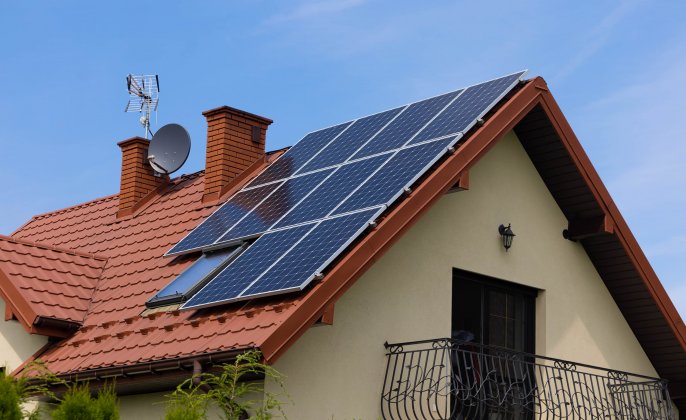Save up to 45% on your heating and cooling costs with a home insulation loan
Energy efficiency loan, with a return of up to 20%
Today, where our homes are concerned, comfort is imperative. We want to feel good at all times, and this means keeping toasty warm in winter and nice and cool in summer.
One of the reasons that we are unable to achieve this sometimes is bad insulation. This issue can be resolved (to some degree) by replacing old wooden doors and windows with PVC joinery, but we also have the option of investing in proper insulation.
The data sides with insulation, as initial investments pay off through visible savings on heating and air conditioning bills, which may be reduced by as much as 45%.
How much does it cost to have a home of 100m2 insulated? – an example
Let’s take a home (a detached house) of 100m2 as an example, that uses pellet-fuel for heating purposes. The average cost of a tonne of pellet is approx. EUR 300. If this house is not insulated, it will consume approx. seven tonnes of pellet over the heating season, which is roughly EUR 2,100. But, if this home were insulated, it would consume approx. four tonnes of pellet per year, which is EUR 1,200. These are clearly savings of EUR 900, yet we have not looked at the effects on the bills created during the summer seasons, when air conditioning is needed.
Insulation of a 100m2 house may cost anywhere between EUR 6,000 and 8,500, depending on the material used. The cost is negligible, but as you can see from the above example, this investment will more than return to you.
The good news is, you don’t have to worry about the money, because ProCredit Bank offers an energy efficiency loan with a return of 15% to 20%.
If you’ve decided to insulate your home, read some of the answers to the most frequently asked questions about insulation. We are sure all your concerns will be addressed.
Is it better to have internal or external walls insulated?
Internal walls are insulated only in cases when external walls cannot be insulated. This technique is effective, and protects equally from loss of heat. Internal wall insulation is usually done if you live in a flat, and are unable to come to an agreement with all the residents to have the entire building insulated. Also, this option is chosen when the building or facility is under state protection, is a building of special significance, the façade, or external appearance of which cannot be altered.
An energy efficiency loan with ProCredit Bank cannot be used to finance the internal wall insulation of one flat in a building, as this does not fall under the category of a technology with 20% more efficiency than all others, which is a condition of the loan. However, if you can agree with your neighbours to have the entire building insulated, then this loan is available to you.
The thicker the insulation, the better – true or false?
This is absolutely TRUE! The thicker the insulation of the building, the better insulated it will be and the more efficient it will be at trapping heat and keeping it in the house in winter, or reversely, keeping the heat out in summer. But, there are always standards and recommendations that should be followed. In this part of the world, EPS styrofoam boards are used for insulation, with roughly a 5 cm thickness, while EU standards are approx. 8 cm.
Do old houses, with thick walls, also need additional insulation?
People say that old houses and buildings with thick walls were built better than those being built now, and therefore they are better insulated. But, this is not always the case. Wall thickness is not a key factor when it comes to good insulation. The thing that is important is the type of material used to construct the walls. If the house/building was made of materials that are efficient heat conductors, then the building will automatically have poorer insulation. Thick walls can be advantageous in summer, when it takes the building a longer period of time to heat up.
Does thermal insulation also mean that you get sound insulation?
It is possible that with thermal insulation you will also receive sound insulation; however, this depends on the type of material used to insulate the building. For example, mineral wool insulation is, generally speaking, better at providing sound insulation than styrofoam.
What do I need to do before I have my home insulated?
Before works begin, you need to have your walls inspected for traces of mould or moisture, and to have this repaired. Next, you must have a vapour barrier installed, on the inside of the thermal insulation, so that you don’t have the same issue again in future.
Is wool really better than styrofoam?
Wool thermal insulation is a better-quality solution, but it is also more expensive. Styrofoam is usually used in this part of the world, which does the job very well. But, if you do want to protect your home with the best-quality solution, then you need to know that there are two types of wool.
Rock wool has a denser structure and better mechanical properties. Given that it has a dense structure, rock wool is sold in slabs of varying thickness. Because of its structure, it is used to insulate the exteriors of flat and slanted rooftops. Further, the harder structure improves the quality of external façade insulation.
Fiberglass wool is less dense, so it is usually packed in rolls. It is easily adjusted and suitable to fill in sloping roofs and partition walls.
Receive a return on investment of up to 20% with a loan for insulation
If this article has motivated you to start thinking about a loan to insulate your home, we have one more piece of important information for you – you can submit a loan application all online, and for a loan amount of up to RSD 600,000, you don’t have to visit the bank at all, loan application, approval and disbursement is done all online. And further, you receive up to 20% of your funds back, as an incentive for investing in energy efficiency.


